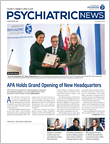The prevalence, mortality, and costs of Alzheimer’s disease continue to rise, according to recent data published by the Alzheimer’s Association.
According to the “2018 Alzheimer’s Disease Facts and Figures,” about 5.7 million Americans are currently living with Alzheimer’s dementia. This number is expected to grow to more than 7 million by 2025 and as many as 14 million by 2050.
“This year’s report illuminates the growing cost and impact of Alzheimer’s on the nation’s health care system, and also points to the growing financial, physical, and emotional toll on families facing this disease,” said Keith Fargo, Ph.D., director of scientific programs and outreach for the Alzheimer’s Association in a press release. “Soaring prevalence, rising mortality rates, and lack of an effective treatment all lead to enormous costs to society.”
In 2018, those costs amounted to an estimated $277 billion—and that doesn’t include the costs borne by friends and family who provide unpaid caregiving to patients. By 2050, the annual cost of care for patients with Alzheimer’s is projected to increase to more than $1 trillion.
While there are no available treatments to cure or even slow the progression of Alzheimer’s, the Alzheimer’s Association pointed to one area where progress is being made: the early diagnosis of the disease.
There are benefits to individuals and society when patients with Alzheimer’s are diagnosed earlier in the course of the disease. An early diagnosis made when an individual has limited cognitive impairment gives the patient more time to make necessary legal, financial, or medical decisions. Early diagnosis can also enable patients to make lifestyle changes such as quitting smoking or increasing physical activity that may help slow their cognitive decline.
The Alzheimer’s Association calculated that these benefits of better planning and potentially a slower progression from mild cognitive impairment to full dementia could result in significant per-person savings in medical and long-term care costs, from a current lifetime estimate of $424,000 per person down to about $360,000.
Malaz Boustani, M.D., the Richard M. Fairbanks Professor of Aging Research at the University of Indiana School of Medicine, told Psychiatric News that he is not yet convinced that focusing on early detection will offer a substantial return on investment. He highlighted a study he conducted in 2012 that found alerting attending physicians that older hospitalized adults might have dementia did little to reduce the use of risky procedures or improve outcomes.
Though it may be a distant goal, curing Alzheimer’s would be the only surefire way to lower the burden of this disease, he said. “Until then, for me, the priority is redesigning dementia care.”
At Indiana, Boustani and his team have developed a collaborative care model known as Healthy Aging Brain Care (HABC) that involves physicians, patients, and caregivers. The program, which rolled out at Indiana’s Eskanazi Health Center several years ago, has been shown to improve patient quality of life and reduce caregiver stress. In addition, a 2014 analysis of HABC estimated that the program reduced the average cost to care for each dementia patient by almost $3,000.
Boustani told Psychiatric News that other academic institutions including Johns Hopkins and the University of California, Los Angeles, have initiated similar programs recently, so this new model of care is slowly gaining popularity. He admitted implementing such a comprehensive care program nationwide will be challenging, but he has been working with colleagues to develop an “agile implementation” strategy for dementia care, making use of lessons learned from launching and managing HABC over the past decade. ■
“2018 Alzheimer’s Disease Facts and Figures” can be accessed
here. “Enhancing Care for Hospitalized Older Adults With Cognitive Impairment: A Randomized Controlled Trial” is available
here.
